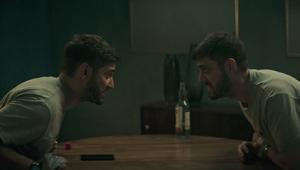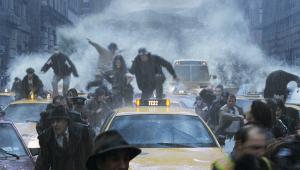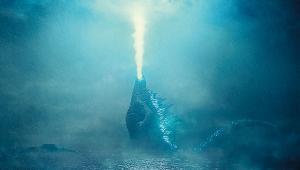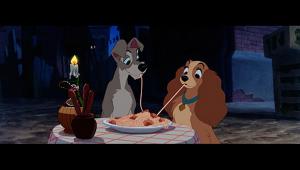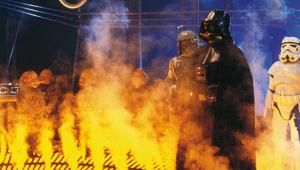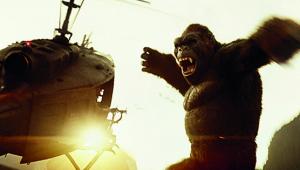You’ve been framed
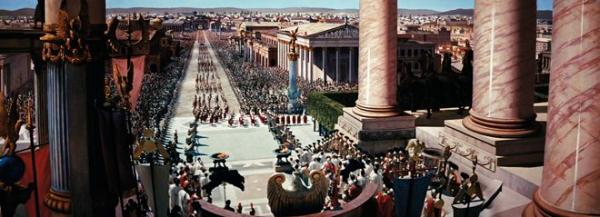
When you relax into a cinema chair for that long-awaited blockbuster, icy drink in cup holder and bag of popcorn balanced on lap, it’s a fair bet that the last thing on your mind will be a shape of the big white screen in front of you. Chances are that your movie will be shown in one of two commonly used aspect ratios – 1.85:1 or 2.39:1, typically referred to in the filmmaking world as flat and CinemaScope respectively. But you might witness something a little more unusual – 2.0.1 or a retro-tinged 1.37:1. And turn the clock back sixty years and it would have been a different situation entirely.
The history and evolution of aspect ratios is complex. Cinematographers rightly pride themselves on their academic knowledge of the subject, but regular movie fans – and even some film directors I've chatted to – often don't know their VistaVision from their Techniscope. So time for a quick recap...
We've been aspecting you...An aspect ratio is always expressed by two numbers separated by a colon. The first, usually larger, number represents the width, while the second, usually smaller, number represents the height of an image. For example, a 4:3 aspect ratio film, or other picture content, when projected onto an 8-foot-wide screen will be 6 feet in height. While 4:3 is a ratio described in whole numbers (as above), more commonly you will see it written as 1.33:1. This system uses a '1' to represent height and a decimal for width. Hence 16:9 becomes 1.78:1.
Content creators don't randomly select these image shapes, of course. Quite the opposite is true. A director may shoot in an impressive widescreen format when conveying expansive vistas – think Westerns – while another may choose to photograph with a comparatively square image like 1.33:1 if, for example, they feel the characters in the story are emotionally trapped, or wish to give an intentionally old-fashioned look to a piece. By the same token, a documentary maker will frequently choose a 1.78:1 aspect ratio to instil a sense of immediacy and realism, as the majority of current affairs coverage for TV is captured in this form. Some directors are known for favouring a particular ratio almost exclusively – John Carpenter, for instance, plumps for 2.35:1 – while others, including Steven Spielberg, have flitted between flat and CinemaScope throughout their career, depending on the movie.
Whatever the filmmaker decides upon, you can be sure that the aspect ratio is never an accident. Widescreen hasn't always been with us, though. Shuttle back to the dawn of cinema and 4:3 was king. And you can blame serial US inventor Thomas Edison – once Eastman Kodak began to produce flexible film in the early 1890s, Edison’s staff photographer, William Kennedy Dickson, settled on using 35mm film for a peephole device, known as the Kinetoscope. Although no one knows quite how a 1.33:1 aspect ratio was arrived at, the legend is that Edison demonstrated a shape just wider than a square with his hands to Dickson. The image size on the film stock was four perforations high and, from 1909 onwards, this would become the default standard for all film shown in the US and beyond.
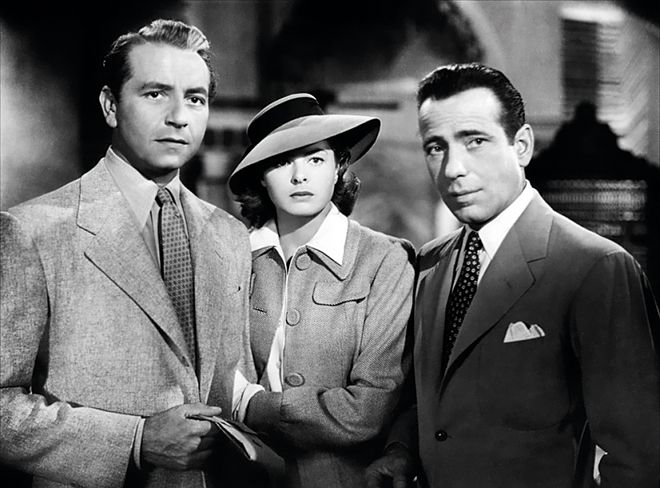
The next step in cinema's evolution saw movies grow ever so slightly wider. With the advent of sound in 1929, space needed to be made on the film stock itself for a strip of optical audio information running alongside the image. The Academy of Motion Picture Arts and Sciences (of Oscar fame) weighed in, and in 1932 decided the image should be slightly reduced in size (although still four-perf), to 1.37:1. This was consequently named Academy Ratio, and is the format that would consolidate the look of movies for another 20 years. Throw Casablanca (1942, pictured above) or Citizen Kane (1941) into your disc spinner to see iconic examples.
So what started the widescreen boom? Funnily enough, it was TV. By the early 1950s, cinema audiences were beginning to taper off as 1.33:1-shaped TV sets found their way into living rooms. Film studios reckoned drastic action was required to motivate bottoms off of sofas and back into the fleapit.
A 1952 technology known as Cinerama, and culled from a WWII military simulator, used three synced 35mm (6-perf) cameras to capture an astounding 2.59:1 aspect ratio with a 147-degree field of vision. The resulting cinema presentation used three projectors and a curved screen. Although a number of travelogues were produced for Cinerama venues including, most famously, This is Cinerama, it wasn’t until 1962 that the first and last feature film titles in the format appeared: The Wonderful World of the Brothers Grimm and How The West Was Won. Yet the unwieldy economics of the system, combined with a rigid photographic focal length – and not always seamless joins between three projected onscreen images – meant that competitors were hot on the trail for more efficient widescreen gizmos. See HCC #249 for more on Cinerama.
While nowhere near as wide, Paramount’s 1953 hit Shane used a 1.66:1 aspect ratio that the studio considered to be a major selling point. Originally shot in 1.37:1 Academy Ratio, the top and bottom of the image were lopped off (masked) to allow a widescreen showing in cinemas without the need for special lenses or projection equipment. Meanwhile, at around the same time, boffins at Twentieth Century Fox cultivated a 1920s French technology invented by Henri Chrétien known as the Anamorphoscope. A film shot with an ‘anamorphic’ lens would squeeze an image from side-to-side by a factor of two; when the same film was projected with a ‘2x’ anamorphic lens in the cinema, the image was ‘unsqueezed’ to deliver a 2.35:1 aspect ratio. The Robe was the first title to use this new 4-perf 35mm process, dubbed CinemaScope, and soon all the studios followed suit.
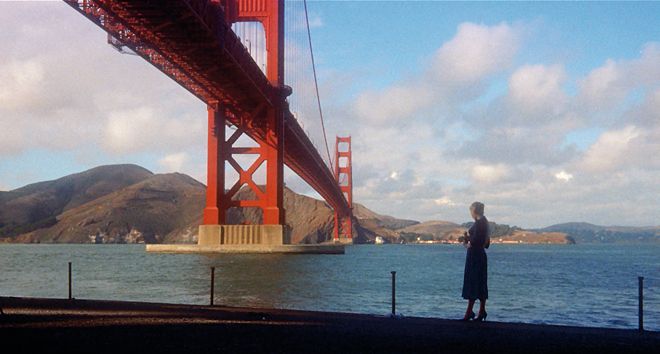
Except Paramount. Having been first out of the gate (by a year) with the 1.66 post-Cinerama process, it countered the studio CinemaScope consensus with VistaVision. This side-winding 8-perf system used a 1.85:1 aspect ratio and overcame the problem of visible grain on anamorphic prints inherent in the squeeze/unsqueeze action. Alfred Hitchcock was a notable proponent of the format, and VistaVision was used to startling effect on Vertigo (1958, pictured above) and North by Northwest (1959).
Two aspect ratios that would come to dominate cinema for decades had been born, yet more 35mm technologies entered the fray in the 1950s, including another three camera/three projector process called Cinemiracle, as well as anamorphic systems branded by studios or independent developers, many of which were short-lived.
Arguably the two most important widescreen breakthroughs of the era were Todd-AO and MGM 65, both of which used 5-perf 65mm film stock running vertically through the camera. In both cases, the release prints were delivered to cinemas on 70mm stock (the extra 5mm of width being preserved for multichannel magnetic sound strips).
Todd-AO theatrical releases included Rogers and Hammerstein classics Oklahoma (1955), South Pacific (1958) and The Sound of Music (1965), and sported a 2.2:1 aspect ratio, using spherical, not anamorphic lenses. Meanwhile, Panavision developed 1.25x anamorphic lenses for the MGM 65 system, which resulted in perhaps the king of all widescreen films Ben-Hur (1959), with its 2.76:1 aspect ratio. On the back of MGM 65, Super Panavision 70 followed, a 2.2:1 spherical system, like Todd-AO, that was deployed on David Lean’s Lawrence of Arabia (1962).
Audiences were now treated to a dizzying range of film formats, but in the latter half of the 1960s the age of widescreen and theatrical spectacle went into retreat, and the industry consolidated on two predominant aspect ratios: 2.35:1 anamorphic (or 2.39:1 depending on projector aperture), and 1.85:1 (a 1.37:1 image size masked at the top and bottom).
Even in our current age of digital cinema, these two image dimensions prevail. Developments since have been sparse. The most famous is from Canadian company IMAX, which debuted its horizontal 15-perf 70mm system in the 1980s, and introduced the concept of large format cinema with its towering, ultra-high-resolution 1.43:1 images, projected on screen sizes of up to 66ft tall and 90ft wide. A number of exhibitors promote similar experiences today, usually combining stacked 2K or 4K digital cinema projectors.
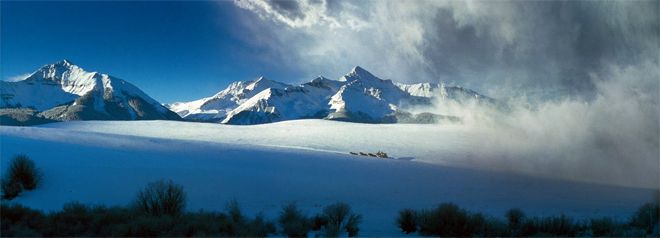
Yet while the technologies haven't altered much, filmmakers continue to dabble and in recent years there has been an upsurge of interest in the use of retro aspect ratios. Wes Anderson flipped from 1.85:1 to 2.35:1 to 1.37:1 in The Grand Budapest Hotel (2014) to represent different time periods of the story; László Nemes lensed his Oscar-winning Holocaust drama Son of Saul (2015) on gritty 1.37:1 16mm stock to heighten a sense of newsreel verisimilitude. The 2015 sci-fi fantasy Tomorrowland harked back to the Todd-AO era with a 2.2:1 ratio, while Quentin Tarantino sourced 2.76:1 Ultra Panavision 70 lenses and equipment for The Hateful Eight (pictured above), the first time they had been used since 1966's Khartoum, to pay tribute to the golden era of widescreen splendour.
Boxes on the boxWhile cinemas can be flexible in their presentations, In home entertainment circles film fans have been more constrained. The 4:3 format dominated TVs for decades – HCC was still reviewing such sets in the 1990s.
Domestic AV has, though, finally caught up with the multiplex with the introduction of widescreen hardware. Standards for HD video were actually determined in the 1980s and the aspect ratio of choice for TVs and broadcasters was announced as 1.78:1 (or 16:9). The number was not arbitrary, but an average mathematical value sitting precisely between 2.35:1 and 1.37:1, and was deemed an adequate compromise for playing back both types of content. Furthermore, 1.78:1 was close enough to the masked theatrical aspect of ratio of 1.85:1, the format already widely selected for cinema prints.
The above explains why early-adopter 16:9 TV owners were perplexed by the presence of black bars when watching movies on their new sets. Surely that was all meant to go away when they dumped their 4:3 CRTs? Unfortunately, 2.35:1 films were still going to exhibit top-and-bottom black bars, and 1.37:1 content now displayed vertical side bars, known as ‘pillarboxing’ (the latter causing cruel burn-in symptoms on early plasma screens if unsuspecting owners were unaware of the problem). The only solution in both cases – if desired – was to use a TV's zoom out function where available to remove the offending black lines, but at the expense of losing picture information. Not an ideal remedy for film purists.
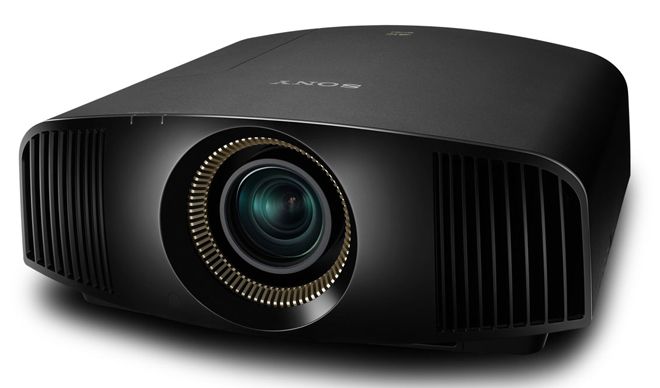
Projector owners are better served, and there are plenty of ways to wow your audience at home on movie night if you have a commanding knowledge of aspect ratios. Framing a 2.76:1 epic like It’s a Mad Mad Mad Mad World or a 1.33:1 Buster Keaton classic on your man-cave wall will blow your guests away, and convince them that you really are the AV genius you always insisted you were.
While most home cinema devotees, for practical purposes, opt for the 16:9 fixed frame or drop-down variety, by far the most impressive way to present Blu-ray or streamed content is with a native 2.35:1 or 2.40:1 screen to enable what is known as CIH (constant image height) presentation. This will mean that your cinema is maximised for, and tailored to, presenting CinemaScope content. There are two ways to fill up your entire screen area for such titles: zooming (manually or with lens memory), and anamorphic lenses.
The first method involves adjusting the zoom function on your projector (assuming you have already accurately calculated your throw distance parameters), pausing your disc spinner on a full, bright 2.35:1 image, and gently nudging the lens control until the borders of the picture bleed slightly over the black perimeters on all sides of the screen. Although this is the cheaper method of the two, the disadvantage here is that you aren't using the full brightness capabilities of your PJ (some its light output is wasted off-screen) and you're only getting about 820 lines of vertical resolution (all Blu-ray 2.35/2.40 titles are masked during the mastering process). You will also need to zoom back in manually, or with your lens memory function, to revert to 16:9 content.
The second, and distinctly more expensive method, is to purchase an anamorphic lens. There are motorised and non-motorised versions available from companies such as Schneider Optics and Panamorph. The function of these devices is to take a 16:9 image and ‘unsqueeze’ it to fill a 2.35:1 or 2.40:1 screen, with the added advantage of using every pixel of the 1,920 x 1,080 (or 3,840 x 2,160) optical panel in your projector. You will also need a projector or video processor with an anamorphic function, one which can electronically interpolate and create a ‘squeezed’ 16:9 source image by literally ‘stretching’ it in the vertical plain. The added vertical resolution achieved with an anamorphic lens adds dimension and detail to the picture, and reduces the possibility of viewers detecting pixel structure. You also benefit from the added brightness of the image as a direct result of using all available pixels.
The cost, however, can be prohibitive, with many of the lenses sitting at around the same price point as a good 1080p projector, and the setup can be painstaking. Particular attention also needs to be paid to the throw specifications of the lens before ordering. Cheaper fixed (non-motorised) anamorphic lenses require that you watch standard 16:9 content with a corresponding reduction in resolution, so beware of that downside too.
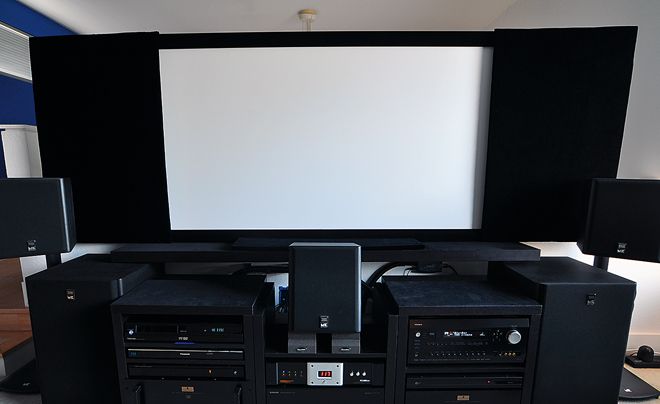
Another alternative is masking. Many of the specialist screen manufacturers produce natty motorised masking systems with electronic presets for 2.40:1, 1.85:1, 1.78:1 and 1.33:1, as well as full control of customised settings beyond. Some products mask vertically (top and bottom), and others, horizontally (from the sides), usually with velour or light-absorbent black panels.
A budget solution to side-masking for a 2.35/2.40:1 screen, and one I use (pictured above), involves purchasing a couple of 0.5in rigid foam insulation panels from a hardware store and cutting them to the height of your fixed frame screen. Keep the factory-cut sides free for image framing duties on either side of the screen. Cover and wrap both panels with black velour material, making sure that the framing edge is pulled taut for a precise boundary, and use a staple gun and double-sided industrial tape to fix the material on the rear-facing sides. Black Velcro squares can then be attached to the corners of the rear-facing sides of the panels, with strips of black Velcro then attached to the frame of your screen.
Then use a test pattern built into your projector (if available), or a movie framed in the intended aspect ratio, to make sure that the placement of your panels onto the frame is accurate. This last step takes a few minutes to get right, as you will be doing it mostly by eye, so one limiting factor with this method is that you can’t realistically change aspect ratios midway through a movie binge. But it works a treat, and both you and your audience will love it. Whatever content, you have absolute control over the final look, and your little DIY job should only cost you about £40. And the same method can be applied for top and bottom masking panels on a 16:9-shaped screen.
Remember: aspect ratios are there to be respected, so work with them if you can!
Blu-rays for widescreen junkies
 Ben-Hur (1959)
Ben-Hur (1959)
This luscious Warner Bros frame-by-frame restoration of William Wyler’s award-winning epic is presented in its original 2.76:1 aspect ratio, letting you marvel at the scale of the choreographed chariot race, row-upon-row of marching centurions, or matte paintings seemingly spilling out into infinity. Its tale of the undulating fortunes of Jewish nobleman Judah Ben-Hur during the life of Christ still resonates today. Add in Miklós Rózsa's stirring score and you might think cinema has never been bettered.
 Lawrence of Arabia (1962)
Lawrence of Arabia (1962)
David Lean’s critically acclaimed masterpiece recounting Lawrence (Peter O'Toole) uniting disparate Arab factions to defeat the Turkish Empire bounds onto the screen with stunning detail and clarity. Sony’s intricate 2.20:1 film-like restoration from a 4K master/8K scan does absolute justice to the sweeping desert panoramas, yet scores highly on shadow detail too. If you ever finish gawping at the sheer beauty of this platter’s wide-lensed image quality, you’ll find Robert Bolt’s complex and multi-layered script a revelation.
 How The West Was Won (1962)
How The West Was Won (1962)
Follow four generations of the Prescott family as they blaze a trail westward across the vast landscapes of America, from New York to the Pacific Ocean, during and after the Civil War, in this epic directed by John Ford, Henry Hathaway and George Marshall. Spot the two joins on the screen where the three-camera Cinerama process makes its mark, and then give the included bonus 'Smilebox' full movie version a whirl, an intriguing curved screen facsimile of the view that 1950s moviegoers would have enjoyed.
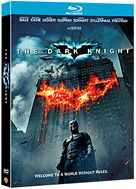 The Dark Knight (2008)
The Dark Knight (2008)
Christopher Nolan’s dark and cerebral caped crusader yarn sees Christian Bale battling it out in violent style against Heath Ledger’s Joker, and throws some aspect ratio curve balls too. Nolan regularly jumps the framing from 2:40:1 to 1.78:1, specifically for the scenes which were shot with IMAX 15-perf film cameras. Warner's VC-1-encoded transfer for the 2008 Blu-ray release is generally magnificent, with involving depth and detail in the IMAX-captured sequences. That said, some edge enhancement takes the shine off a touch.
 |
Home Cinema Choice #351 is on sale now, featuring: Samsung S95D flagship OLED TV; Ascendo loudspeakers; Pioneer VSA-LX805 AV receiver; UST projector roundup; 2024’s summer movies; Conan 4K; and more
|



